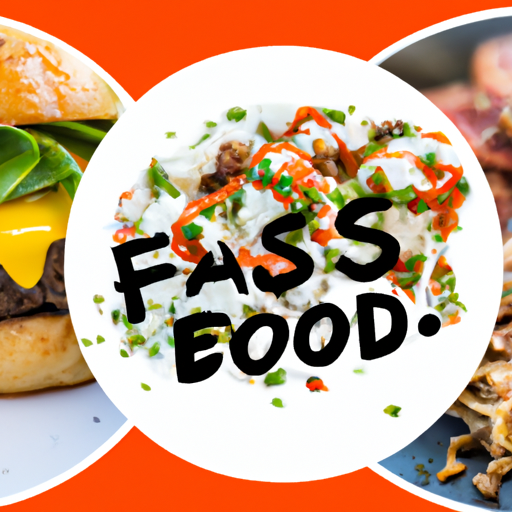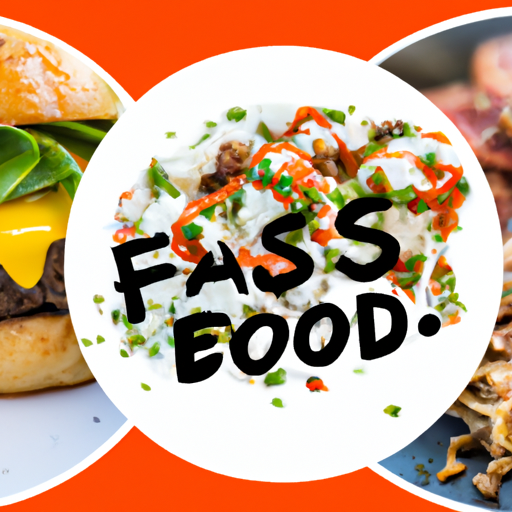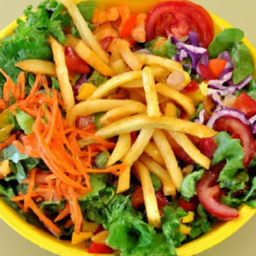What Consumer Trends Make A Food Truck Successful
So you’re starting a food truck business and you want to make sure it’s a roaring success. Well, let me tell you, there are a few key consumer trends you need to keep on your radar. From the rising demand for plant-based options to the popularity of unique and Instagrammable dishes, understanding these trends can make or break your food truck venture. In this article, we’ll explore the hottest consumer trends that can help you carve a path to success in the competitive world of food trucks. Get ready to tantalize taste buds and turn heads with your food truck offerings!

Table of Contents
Market Research and Target Audience
Understanding Consumer Trends
When starting a food truck business, it is crucial to understand the consumer trends that can contribute to its success. By staying up-to-date with the latest consumer preferences and behaviors, you can effectively tailor your offerings to meet their needs. This involves examining the evolving food and dining trends such as the increasing demand for healthier options, locally-sourced ingredients, and unique culinary experiences.
Identifying Target Demographics
To ensure the success of your food truck, it is crucial to identify your target audience. Understanding the demographics of your potential customers will help you tailor your menu, branding, and marketing strategies accordingly. Consider factors such as age, gender, income levels, and lifestyle preferences. For example, if your target demographic consists of health-conscious individuals, you can focus on offering nutritious and organic options.
Analyzing Competition
Analyzing your competition is essential for gaining a competitive edge in the food truck industry. Research the existing food truck vendors in your area to identify their menu offerings, pricing, and customer experiences. By understanding their strengths and weaknesses, you can develop a unique selling proposition that sets your food truck apart. Additionally, analyzing your competition can help you identify any gaps in the market that you can fulfill with your menu and concept.
Food Trends and Menu Innovation
Adapting to Changing Food Preferences
One key aspect of a successful food truck is the ability to adapt to changing food preferences. Stay updated with the latest food trends and incorporate them into your menu to attract a wider customer base. For example, plant-based options, gluten-free alternatives, and ethnic fusion dishes are currently gaining popularity. By incorporating these trends into your menu, you can cater to a larger audience and position yourself as a modern and relevant food truck.
Catering to Specific Dietary Needs
In today’s diverse food landscape, it is crucial to cater to specific dietary needs and preferences. Offering menu items that accommodate various dietary restrictions such as vegetarian, vegan, gluten-free, or allergen-free options can significantly enhance your food truck’s appeal. This inclusivity ensures that individuals with specific dietary needs can enjoy your food, thereby increasing your customer base and loyalty.
Offering Unique and Creative Menu Items
To stand out from the competition, it is important to offer unique and creative menu items that leave a lasting impression on your customers. Experiment with flavors, ingredients, and presentation to create innovative dishes that spark curiosity and excitement. Consider incorporating locally-sourced ingredients, fusion cuisines, or signature dishes that are exclusive to your food truck. By continually innovating your menu, you can keep your customers intrigued and coming back for more.
Convenience and Accessibility
Location Selection
Choosing the right location for your food truck is crucial for maximizing visibility and accessibility. Research areas with high foot traffic such as business districts, parks, or popular tourist spots. Consider local events, festivals, and markets where you can set up your food truck to reach a wider audience. Additionally, explore partnerships with local businesses that can allow you to park your truck near their establishments, providing convenience to customers and increasing your visibility.
Operating Hours
Flexibility in operating hours is important to cater to different customer preferences and lifestyles. Consider opening during both lunch and dinner hours to capture different target audiences. Additionally, evaluate the demand for late-night dining options in your area, as this can be a profitable niche market. By offering extended operating hours and being responsive to customer needs, you can ensure convenience and accessibility, leading to customer loyalty.
Quick and Efficient Service
In the fast-paced world of food trucks, quick and efficient service is essential to keep customers satisfied. Design your workflow and service processes in a way that minimizes waiting times and ensures a smooth customer experience. Invest in technology such as point-of-sale systems and mobile ordering apps to streamline the ordering and payment process. Friendly and attentive staff who can handle high volumes of orders efficiently will also contribute to a positive customer experience.
Social Media and Online Presence
Creating Engaging Social Media Profiles
In today’s digital age, creating a strong online presence is crucial for the success of your food truck. Develop engaging and visually appealing profiles on popular social media platforms such as Facebook, Instagram, and Twitter. Share high-quality photos of your dishes, behind-the-scenes peeks, and engaging captions. Interact with your followers regularly by responding to comments, hosting contests, and sharing relevant content. A strong social media presence can help increase brand awareness, attract new customers, and foster a loyal following.
Utilizing Online Platforms for Marketing
In addition to social media, utilize online platforms such as food delivery apps, review websites, and food blogging networks to market your food truck. Collaborate with popular food bloggers or influencers who can help spread the word about your food truck to their followers. Encourage positive reviews on websites such as Yelp and Google My Business to enhance your online reputation. Leveraging these online platforms provides a convenient way for customers to discover your food truck and order your offerings.
Encouraging User-generated Content
Harness the power of user-generated content by encouraging your customers to share their experiences with your food truck on social media. Create fun and memorable experiences that customers would want to capture and share. For example, you can offer Instagram-worthy food presentations or introduce interactive elements like photo booths. Encourage customers to use specific hashtags associated with your food truck and consider offering incentives or shoutouts for those who tag and mention your food truck in their posts. User-generated content not only provides free advertising but also helps foster a sense of community around your brand.
Brand Identity and Storytelling
Developing a Unique and Memorable Brand Image
To stand out in the highly competitive food truck industry, it is crucial to develop a unique and memorable brand image. Take time to carefully craft your brand identity, including your logo, color palette, and overall aesthetic. Make sure your brand reflects the essence of your food truck, whether it’s fun and playful, sophisticated, or rooted in a specific culture or cuisine. Consistency across all touchpoints, such as your physical truck, online presence, and marketing materials, helps create a strong and recognizable brand image.
Sharing the Food Truck’s Story
Every food truck has a story, and sharing yours can help create an emotional connection with your customers. Communicate the inspiration behind your food truck, the journey that led you to this venture, and the values that drive your business. Use social media, your website, and any other marketing channels to share your story in an authentic and compelling way. Sharing your story allows customers to feel more connected to your brand and builds trust in your food and vision.
Fostering Emotional Connection with Customers
Building on your brand story, focus on fostering an emotional connection with your customers. Interact with them genuinely, showing appreciation for their support and feedback. Personalize the customer experience by remembering regulars’ names and preferences. Engage in conversations and listen to their feedback, addressing any concerns promptly. Celebrate milestones or special occasions with your customer base to make them feel like part of your food truck family. By building strong emotional connections, you encourage customer loyalty and positive word-of-mouth recommendations.
Cost-effective Pricing and Value Proposition
Offering Competitive Price Points
Setting competitive price points is crucial for attracting customers and ensuring profitability. Conduct market research to understand the pricing strategies of your competitors, both food trucks and brick-and-mortar restaurants. Consider your cost of ingredients, overhead expenses, and desired profit margins when determining your menu prices. Striking the right balance between affordability and quality is essential to communicate value to your customers.
Providing High-quality Ingredients
In the food truck industry, quality ingredients play a significant role in distinguishing your offerings and satisfying customers. Source high-quality and fresh ingredients from trusted suppliers. Emphasize the use of locally-sourced produce, organic options, or ethically-raised meat to resonate with the growing consumer trend towards sustainability and supporting local businesses. Clearly communicate your commitment to quality ingredients through signage, menu descriptions, and conversations with customers.
Delivering Value for Money
While offering competitive pricing and high-quality ingredients are crucial, it is equally important to deliver value for money. Ensure that your portion sizes are satisfying, and your dishes are flavorful and well-presented. Consider offering meal deals, combo options, or loyalty discounts to incentivize customers to visit your food truck repeatedly. By providing a great dining experience and perceived value for money, you encourage customers to choose your food truck over other dining options.
Collaborations and Partnerships
Joining Food Truck Associations and Events
Joining food truck associations and participating in local events is an effective way to network with other vendors and gain exposure. These associations often organize food truck festivals, food fairs, or pop-up events where you can showcase your offerings to a larger audience. Collaborating with other food trucks by organizing joint events or partnering for special promotions can also help generate buzz and attract new customers.
Teaming Up with Local Businesses
Forming partnerships with local businesses can be mutually beneficial for both your food truck and the partnering business. Explore opportunities to collaborate with nearby cafes, breweries, or community centers to provide food options during their events or cater to their customers. This not only expands your customer base but also strengthens the local community by supporting each other’s businesses. Additionally, consider forming relationships with local food producers or farmers who can supply you with fresh ingredients and offer mutual promotional benefits.
Co-promoting with Influencers or Brands
Leverage the power of influencers and brands that align with your target audience and brand values. Identify influential food bloggers, social media personalities, or local celebrities who have a significant following in your area. Offer them a complimentary meal or exclusive experience at your food truck in exchange for them sharing their positive experience with their followers. Similarly, explore partnerships with relevant brands or organizations that share similar values or target demographics. Collaborative marketing efforts amplify your reach and introduce your food truck to a wider audience.
Sustainability and Eco-friendly Practices
Using Biodegradable Packaging
In today’s environmentally-conscious world, incorporating sustainable practices can give your food truck a competitive edge. Opt for biodegradable or compostable packaging materials made from renewable resources. This includes compostable food containers, paper straws, and wooden cutlery. Communicate your commitment to sustainability by visibly displaying recycling bins and educational signage promoting eco-friendly practices. Showcasing your dedication to the environment can attract customers who prioritize sustainability and encourage positive word-of-mouth.
Sourcing Ingredients from Local and Sustainable Suppliers
Supporting local businesses and sustainable practices extends beyond packaging. Source your ingredients from local and sustainable suppliers whenever possible. This not only reduces carbon emissions associated with long-distance transportation but also supports the local economy. Clearly communicate your commitment to sourcing ethically and sustainably produced ingredients to resonate with conscious consumers who value knowing the origin of their food.
Reducing Food Waste
Food waste is a significant issue in the food industry, and as a food truck operator, you can play a role in addressing this problem. Implement strategies to minimize food waste, such as careful inventory management, portion control, and creative menu planning. Consider partnering with local organizations or initiatives that collect excess food and donate it to those in need. Demonstrating your efforts to reduce food waste not only showcases your commitment to sustainability but also appeals to socially-conscious consumers.
Customer Engagement and Loyalty Programs
Creating a Memorable Customer Experience
Providing a memorable customer experience is vital for creating a loyal customer base. Ensure that your staff is friendly, attentive, and knowledgeable about your menu offerings. Consider implementing unique touches, such as personalized greetings, handwritten thank-you notes, or offering samples of new menu items. Engage in conversations with your customers, showing genuine interest and care. By going above and beyond, you leave a lasting impression and make customers feel valued.
Implementing Reward Programs
Rewarding loyal customers through loyalty programs is an effective way to encourage repeat visits and build customer loyalty. Implement a system where customers can earn points for each purchase and redeem those points for discounts, freebies, or exclusive offers. This not only incentivizes customers to return but also allows you to gather valuable customer data for future marketing initiatives. Use technology to simplify the reward program process, such as mobile apps or digital punch cards.
Collecting Feedback and Encouraging Dialogue
Create opportunities for customers to provide feedback and share their thoughts. Offer suggestion cards, digital surveys, or social media polls to gather insights into customer preferences and areas for improvement. Regularly monitor and respond to online reviews to demonstrate your commitment to customer satisfaction. Actively engage in dialogue with your customers, whether through social media comments or in-person conversations. By listening, addressing concerns, and implementing customer suggestions, you show that their opinions are valued, fostering a sense of loyalty and trust.
Adaptability and Flexibility
Evolving with Changing Consumer Demands
Consumer preferences and trends are constantly evolving, and as a food truck owner, it is important to adapt to these changes. Continually research and stay informed about the latest food and dining trends, and be open to adjusting your menu offerings accordingly. Monitor customer feedback, conduct surveys, and analyze sales data to identify areas of improvement and potential opportunities for growth. Flexibility and adaptability are key traits for ensuring the long-term success of your food truck.
Experimenting with New Menu Items
Keeping your menu fresh and exciting is crucial for attracting and retaining customers. Encourage creativity and experimentation in your kitchen by regularly introducing new menu items or seasonal specials. Offer limited-time promotions or collaborations with local chefs or food producers to create buzz and boost customer interest. Pay attention to customer feedback and sales data to determine which new menu items resonate with your audience and have the potential for long-term success.
Being Open to Feedback and Suggestions
Listening to your customers is essential for understanding their needs and improving your food truck business. Encourage customers to provide feedback and suggestions through various channels, such as suggestion boxes, surveys, or direct conversations. Actively implement changes based on valuable feedback to demonstrate that you value their opinions and are committed to continuous improvement. By being open and responsive, you can build a loyal customer base that feels heard and appreciated.
In summary, a successful food truck is the result of various factors, including understanding consumer trends, adapting to changing food preferences, ensuring convenience and accessibility, building a strong online presence, creating a unique brand identity, offering value for money, establishing collaborations, adopting sustainable practices, engaging customers, and remaining adaptable. By considering and implementing these strategies, you can maximize the potential of your food truck business and thrive in a competitive industry.






